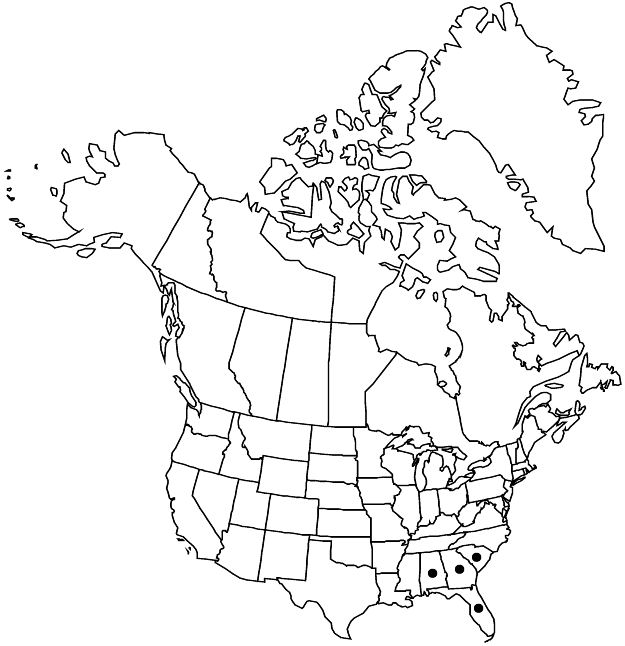Piriqueta cistoides subsp. caroliniana
Ann. Missouri Bot. Gard. 77: 351. 1990.
Plants 10–60 cm. Leaves: petiole to 2(–8) mm; blade linear to elliptic or obovate, 8–70 × 1.5–22 mm, base cuneate to rounded, apex obtuse or acute, surfaces tomentose or glabrous. Peduncles and pedicels erect-ascending, combined length 6.5–22 mm. Flowers not self compatible; calyx 4.7–11 mm, tube 1.3–3 mm; petals 8–24 × 3–15 mm; stamens 3–5 mm in long-styled flowers, 5–9 mm in short-styled flowers; styles often forked, 3.5–6 mm in long-styled flowers, 1.3–3 mm in short-styled flowers. Capsules ovoid, 4–8 mm. Seeds 12–30, dark, 1.5–2.1 × 0.9–1.2 mm; aril unilateral, 1–2 mm. 2n = 14.
Phenology: Flowering and fruiting year-round.
Habitat: Marshes to dry pinelands and sand scrub, dry or scrubby flatwoods, sandhills, roadsides, other ruderal areas, sandy soil
Elevation: 0–60 m
Distribution

Ala., Fla., Ga., S.C., West Indies, South America.
Discussion
Some authors consider subsp. caroliniana to be a species complex composed of multiple morphotypes that hybridize along a wide zone in Florida; North American populations would have been derived from three independent migrations from the northern Bahamas (M. B. Cruzan 2005; S. D. Maskas and Cruzan 2000; K. McBreen and Cruzan 2004; Jiongqion Wang and Cruzan 1998). The morphotypes differ mainly in leaf shape and indument; leaf traits and plasticity responses toward narrower shape and higher trichome density are associated with increased drought conditions (J. J. Picotte et al. 2009).
Selected References
None.
